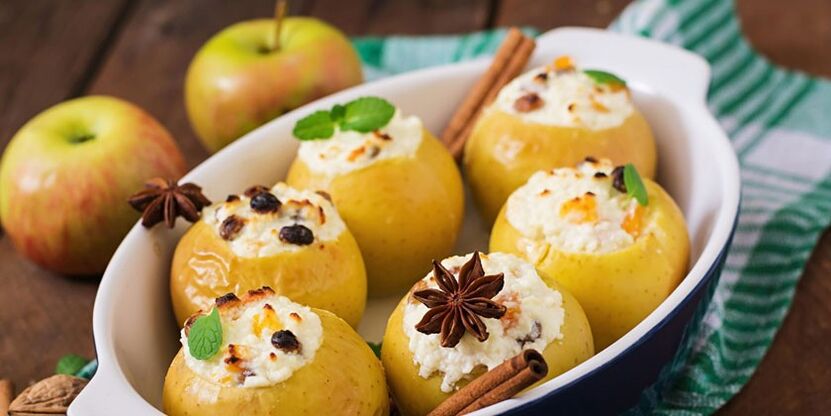An urgent problem of modern man is allergy. It is a kind of reaction of the body to the action of special substances called allergens. People encounter them while breathing, eating, or touching skin. Allergies can affect men and women, children and adults. The main method of its treatment and prevention is a diet with a hypoallergenic diet. It is suitable not only for allergy sufferers, but also for nursing mothers, who can improve the quality of breast milk with the help of such a menu.
What is a hypoallergenic diet
Allergy in medicine is a condition in which there is an increased sensitivity to external or internal stimuli. In this case, the human body perceives harmless substances as antigens. Even minimal contact of the person with the allergen produces large amounts of IgE. Mechanism of allergic reaction:
- Immunoglobulin IgE, upon first contact with the allergen, detects it and fuses it with mast cells and basophils (cells of the immune system).
- The result is complex. It consists of an allergen, IgE and a mast cell or basophil.
- The complex with basophils reaches the bloodstream through various organs: the skin, nose, lungs, stomach, and mast cells remain immobile.
- After re-entering the body, basophils and mast cells secrete special substances - histamine and serotonin. They are essential to combat irritants.
Histamine in combination with serotonin causes allergic reactions: smooth muscle spasm and dilation of capillaries, leading to thickening and swelling of the blood. Since allergies are often caused by food, in addition to antihistamines, diet should be included in the treatment regimen. It also plays an important role in allergic reactions to medications used in the breeding of birds and animals (antibiotics, salicylates). The diet is based on the following principles:
- Exclusion of products containing cross-linked and causative allergens;
- Eating only fresh produce;
- Rejection of histamine-liberators - products that cause the release of histamine from the gastrointestinal tract from its cells: chocolate, cow's milk, coffee, wheat bran, orange juice;
- Restriction of animal protein in the diet;
- Exclusion of preservatives and products with dyes, preservatives and flavorings;
- Restriction of simple carbohydrates, salt, fried, spicy and salty foods, alcohol;
- Rejection of histamine carriers - foods with high histamine content (tomatoes, strawberries, nuts, cocoa, spinach).
ᲖGogi Principles
There is a special diet for people with allergies - Table number 5 GA (hypoallergenic). It is based on the therapeutic diet No. 5, which is prescribed for diseases of the biliary system and liver. Adults should be fed according to the principles of Table 5 for 3 weeks, children - for 10 days. This is enough to make the allergy disappear forever. The future diet is built on the following principles:
- When symptoms subside, you can switch from anti-allergic foods to less restrictive diets and gradually expand your diet to foods with moderate allergenic activity.
- First come cooked low-fat white fish, bread, fresh onions, fruit puree, compotes.
- Throughout the diet the food is cooked or steamed. Roasting and baking will increase the allergen content.
- Meals should be full of proteins, fats and slow carbohydrates.
- Each new diet product is added no more than once every 3 days. If there is no negative reaction to it, you can leave it on the menu.
- The optimal feeding option is fractional, in which the amount of food is reached 5-6 times a day.
- Products containing easily digestible carbohydrates are completely forbidden: sweets, honey, jam, chocolate. You can use aspartame, saccharin or xylitol instead of sugar.
- If the cause of the allergy is not identified, then all causative allergens should be excluded: strawberries, nuts, chocolate, honey, eggs, seafood, caviar, citrus fruits, melons, tomatoes.
- It is important to enrich the diet with calcium, which has anti-inflammatory and anti-allergic properties. This trace element is found in cottage cheese, fermented dairy products.
- All dishes that contain an allergenic product are excluded from the diet menu. For example, if the reaction is manifested in eggs, then you should avoid creams, mayonnaise, casseroles, rich flour products.

Testimonies
Diet is effective not only for food allergies. A special diet helps to reduce the impact of allergens and other groups (medicinal, fungal, dust, household). On a diet, a person reduces the risk of increased clinical symptoms of the following diseases:
- Quincke's edema;
- Allergic rhinitis;
- Urticaria;
- Pathologies of the digestive tract in which the process of absorption of nutrients is disrupted;
- Atopic dermatitis;
- bronchial asthma;
- Hay fever.
List of hypoallergenic foods
When preparing the first dishes it is recommended to use vegetable broth without roasting. He must be weak, e. ი. After 1-2 boils the water expires. It is allowed to add different garden herbs. From cereals it is useful to use oats, buckwheat, wheat. Potatoes are allowed as a side dish in the form of mashed potatoes, but only cooked in water. From fermented dairy products you can use low-fat fresh cottage cheese, without yogurt additives.
To enrich the body with fats, you should include sunflower or olive oil in your diet. Pasta should be made only from solid wheat. Other hypoallergenic products:
Name |
Calories per 100 g, kcal |
Fat per 100 g, g |
Carbohydrates per 100 g, g |
Proteins per 100 g, g |
|---|---|---|---|---|
Vegetables, herbs |
||||
Eggplant |
24 |
0. 1 |
4. 5 |
1, 2 |
Zucchini |
24 |
0. 3 |
4. 6 |
0. 6 |
Cucumber |
15 |
0. 1 |
2. 8 |
0. 8 |
Cabbage |
27 |
0. 1 |
0. 1 |
1. 8 |
Pumpkin |
19 |
0. 1 |
4. 3 |
0. 6 |
ᲑRocoli |
28 |
0, 4 |
5. 2 |
3. 0 |
Celery |
12 |
0. 1 |
2. 1 |
0. 9 |
Lentils |
284 |
1. 5 |
42. 7 |
24. 0 |
garlic |
143 |
0. 5 |
29. 9 |
6. 5 |
Asparagus |
Twenty |
0. 1 |
3. 1 |
1. 9 |
ᲮOf |
41 |
0. 0 |
10. 4 |
1. 4 |
bean |
123 |
0. 5 |
21. 5 |
7. 8 |
Cereals |
||||
Oatmeal |
342 |
6. 1 |
59. 5 |
12. 3 |
Buckwheat |
313 |
3. 3 |
62. 1 |
12. 6 |
Wheat bran |
296 |
3. 8 |
53. 6 |
15. 1 |
Semolina |
328 |
1. 0 |
73. 3 |
10. 3 |
Cereals |
366 |
7. 2 |
69. 3 |
11. 9 |
Ხილი |
||||
Peach |
46 |
0. 1 |
11. 3 |
0. 9 |
Nectarines |
48 |
0. 2 |
11. 8 |
0. 9 |
Apples |
47 |
0, 4 |
9. 8 |
0, 4 |
Pear |
42 |
0. 2 |
10. 9 |
0, 4 |
Milk products |
||||
Kefir 0% |
Thirty |
0. 1 |
3. 8 |
3. 0 |
Kefir 1% |
40 |
1. 0 |
4. 0 |
2. 8 |
Cottage cheese 0. 6% |
88 |
0. 6 |
1. 8 |
18. 0 |
Meat |
||||
boiled chicken |
170 |
7. 4 |
0. 0 |
25. 2 |
Boiled turkey fillet |
130 |
1. 0 |
0. 0 |
25. 0 |
Cooked beef |
254 |
16. 8 |
0. 0 |
25. 8 |
Beef stewed |
232 |
18. 3 |
0. 0 |
16. 8 |
Თեւზი |
||||
Flaunder |
90 |
3. 0 |
0. 0 |
15. 7 |
Halibut |
103 |
3. 0 |
0. 0 |
18. 9 |
Code |
69 |
0. 6 |
0. 0 |
16. 0 |
Seaweeds |
49 |
5. 1 |
0. 0 |
0. 8 |
ᲡAsmeli |
||||
Rose juice |
70 |
0. 0 |
17. 6 |
0. 1 |
Prohibited food
The list of prohibited foods includes fish and meat broths. It is also necessary to avoid a hypoallergenic diet with fatty red meat, poultry (goose and duck), whole milk and most sausages. Strong allergens are citrus fruits, sweets, seafood (squid, mussels, shrimp). The same goes for all salty foods, pickles, canned foods. The ban also includes:
- ᲬWhite currant;
- Lemon, mango, grapes, grapefruit, pomegranate, banana, orange, tangerine;
- Nuts, raisins;
- Carrots, lettuce, tomatoes;
- ᲗWhite rice;
- Jam, sweets, ice cream, cakes;
- Condensed milk, sour cream 30%, 40%, cheese, cottage cheese 18%;
- Vinegar, mayonnaise;
- Mutton, smoked chicken, sausages, sausages, pork fat;
- Semi-finished fish and canned food, mackerel, sardines, caviar;
- Butter margarine, coconut and palm oils;
- White dessert and dry wines, vodka, cognac, beer, liqueur;
- Cola, coffee, Pepsi, Sprite;
- Blueberries.
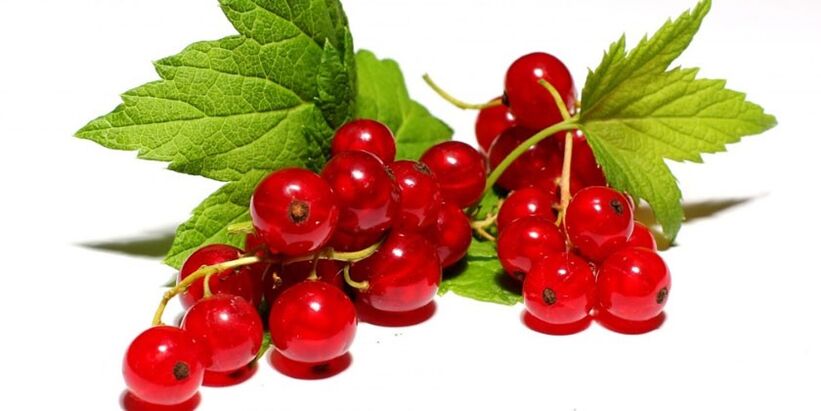
Hypoallergenic diet menu
Keeping a food diary can help alleviate allergies during a hypoallergenic diet. In it you can record the food or dishes used for the diet and the reaction to them. Because of this it will be possible to accurately identify allergens and exclude them from the menu. In addition, the diary makes it easy to keep track of how varied your diet is. This is important because scientists have found that in the case of the same menu, the likelihood of developing allergies is higher. In a blog you can write several options for a hypoallergenic diet menu and then buy only the necessary ingredients.
ᲑFor children
The hypoallergenic menu for children is built on the same principles as for adults. There is only one important difference - with long-term adherence to such a diet, the risk of protein, carbohydrate and micronutrient deficiencies is high. This causes a delay in physical development. Table 5 is used for 7-10 days just to start depending on your health condition. The doctor then selects individual hypoallergenic products for children. Menu options:
Diet menu option |
Breakfast |
Dinner |
Dinner |
|---|---|---|---|
1 |
Blunt buckwheat porridge, cheese, apples, tea. |
Potato soup with noodles, steamed meat cutlet with stewed vegetables, compote. |
Boiled meat with stewed potatoes, tea. |
2 |
Oat flakes in water, dry crackers. |
Lean beef soup without carrots, corn salad, Chinese cabbage and cucumber salad. |
Steamed beef dumplings cooked with cauliflower, compote. |
3 |
Buckwheat flakes with kefir. |
Mashed potatoes in water, boiled cauliflower, lean veal, berry jelly. |
Chicken stewed peas and vegetables. |
For adults
If the hypoallergenic diet for children lasts 7-10 days, then adults can follow it longer - up to 2-3 weeks. The menu is practically no different in both cases, as the same list of anti-allergy products is used for its construction. Daily diet options for adults:
Menu option |
Breakfast |
Dinner |
Dinner |
|---|---|---|---|
1 |
Buckwheat ground porridge, green tea with croutons, baked apples. |
Steamed chicken cutlets, vegetable soup, rose broth. |
Vinaigrette, tea with diet cookies. |
2 |
Semolina porridge on water, low-fat fresh cottage cheese, apple juice with biscuit. |
Meat cutlet, vegetable soup with wheat grains, tea biscuit cakes. |
Pea puree, meatballs. |
3 |
Cottage cheese, kefir. |
Veal cutlet, buckwheat porridge, vegetable soup. |
Cabbage and zucchini soup, steamed cutlets, rose broth. |
Hypoallergenic recipes
The basic principle of choosing recipes is that the finished dishes have a beneficial effect on the digestive tract. For this reason, salting, fermentation and fermentation are completely ruled out. Steam boiling or boiling on the stomach is considered gentle. Such methods of preparation help to reduce the allergenic activity of the ingredients used. Fruits and vegetables are also best eaten not raw but stewed or baked.
Პirveli
The list of the first hypoallergenic dishes mainly includes soups. Potatoes are often used for cooking. It is recommended to pre-soak it in cold water. Reducing the amount of starch in vegetables takes several hours. Soup supplies should be second or third. This means that the liquid expires 1-2 times after boiling. So the fat content in the finished soup will be much lower.
Vegetable soup with wheat grains
The peculiarity of this soup lies in a special ingredient - celery. Dishes with it are often found in various diets, including hypoallergenic. Celery with parsley has a carrot flavor. Its leaves have a spicy and fresh aroma. The benefits of celery are manifested not only in case of allergies, but also for weight loss. According to this recipe, the soup combines potatoes, cabbage and dill. Add a little spice to the garlic dish.
Ingredients:
- Onion - 0, 5-1 pcs. ;
- White cabbage - 100 g;
- Chopped wheat groats (Bulgarian) - 50 g;
- Celery - 1 small root;
- Water - 1, 5-1, 6 l;
- Potato tubers - 3 pieces;
- Dill or other herbs - 1 branch;
- Garlic cloves - 2 pcs.
Method of preparation:
- Boil water, put Bulgarian in it.
- Then cut the fried potatoes and add to the broth.
- Peel an onion, finely chop, add the rest of the ingredients.
- Wash celery, put in broth.
- Reduce heat to low after boiling.
- Boil for 15-20 minutes under the lid.
- Take out a piece of potato, grate it and put it back.
- Wash the cabbage leaves, dry them, press and pour in the almost finished soup.
- Boil for another 10 minutes, then remove and discard the celery.
- Finely chop the herbs and garlic cloves, mix in the soup.
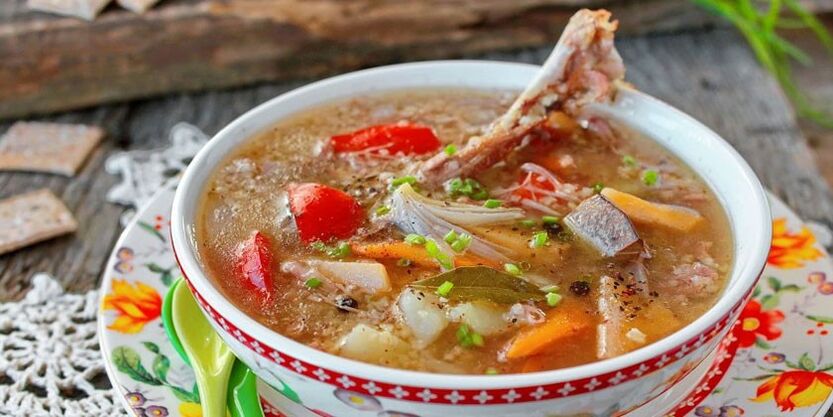
Potato soup with porridge
This dish requires minimal food. The soup is suitable for both adults and children. Onions in broth are practically not felt as they are cooked. Because the vegetables are placed at the beginning of cooking, the meat turns out very tasty. It is allowed to replace chicken with lean beef, but this will make the soup slightly thicker, and it will take 30-60 minutes more to cook it.
Ingredients:
- Small onion - 1 tsp. ;
- Herbs - to your taste;
- Chicken fillet - 800 g;
- Premium vermicelli - 200 g;
- Potato tubers - 4-5 pieces;
- Water - 4 liters.
Method of preparation:
- Pour water over well-washed meat, put the pan on maximum heat.
- Bring to a boil, drain the liquid.
- Pour the same amount of water again, boil again, remove the foam.
- At this time, remove the onion from the skin, finely chop, add to the broth.
- Reduce heat to low, cook for 30-40 minutes, until meat is ready, then remove, press into slices and send back.
- Boil the vermicelli separately in slightly salted water. This is necessary so that the broth does not become contaminated due to precipitation.
- Squeeze, wash and press the potatoes. Put the pieces in the broth, cook for 5 minutes.
- Then fill the soup with boiled noodles.
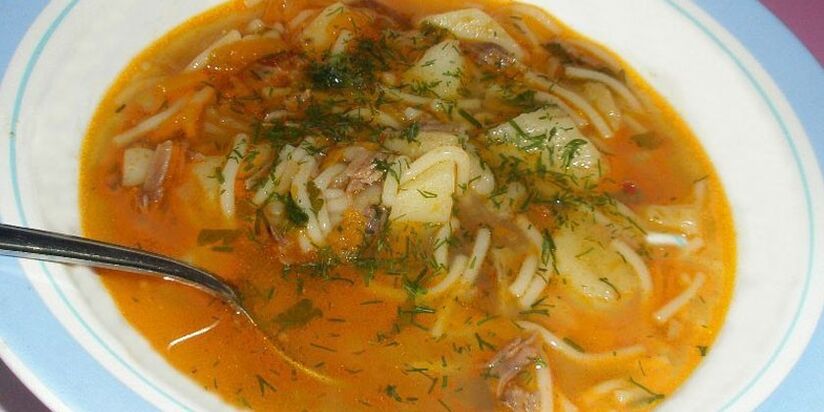
Second
Main dishes are also vegetables or meat. Cutlets, dumplings, meat and meat are mainly steamed. The meat can be ground, in the heart and even beef stroganoff or soup. In the recipe of the last dish, minced meat is mixed with milk sauce, heart and whipped protein. The soup is already suitable for the stage when you start to gradually introduce foods with moderate allergens. Vegetables can be eaten next to meat in a particular dish, but they are only stewed, cooked or baked because fried increases the allergy to the ingredients.
Cabbage and zucchini puree soup
The advantage of puree soup is its uniform soft consistency, which is why the dish does not irritate the stomach and intestines. Not only meat but also vegetables are used in such recipes. An unusual combination - zucchini and cauliflower. The first vegetable has a neutral taste and is therefore combined with many ingredients. In addition, they have no contraindications. Cauliflower is not recommended for gastrointestinal problems.
Ingredients:
- Zucchini - 2-3 pcs. ;
- Onion head - 1 tsp. ;
- Celery - 5-7 stems;
- Parsley - 1-2 branches;
- Water or weak vegetable broth - 1 liter;
- Cauliflower - 1 small head of cabbage;
- Low-fat sour cream - 100 g.
Method of preparation:
- Divide cauliflower flowers into small pieces, peel the zucchini, then rinse the vegetables, including the celery.
- Cut the onion head into cubes. Repeat the same with zucchini, celery, cauliflower.
- Place all the vegetables on the bottom of the pot and cover with water. Boil, boil until the ingredients are softened.
- Then cool, transfer to a blender jar, whisk until smooth.
- Pour the resulting mass back into the pot, add sour cream, boil on low heat for several minutes.
- Serve with chopped herbs when serving.
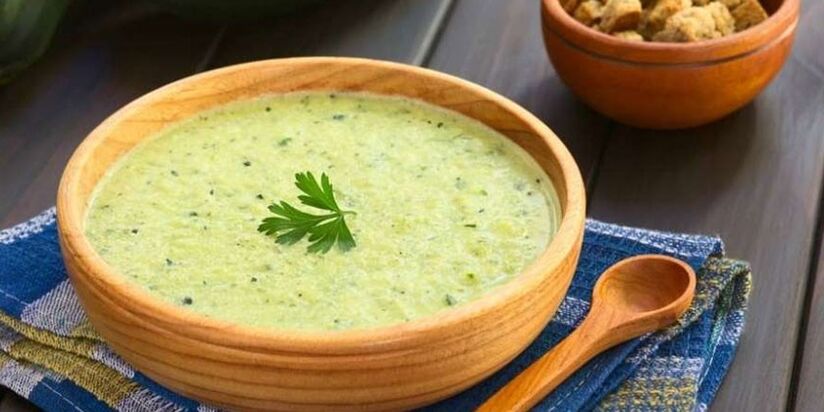
Steam dumplings
The knees refer to one of the types of pelmeni - small balls prepared on the basis of minced meat from fish, poultry or other meat. The difference between a pelmeni mass and a cutlet mass is that it is more fluffy and tender. For this reason, pelmeni is more suitable for children and dietary hypoallergenic diets. Another feature of such a dish is the cooking on steam, which is why the meat retains more vitamins. In addition, steam suppression is more easily absorbed by the stomach.
Ingredients:
- Skim milk - 2 tbsp. K. ;
- Egg white - 2 pcs. ;
- Beef pulp - 800 g;
- Wheat bread - 1 slice.
Method of preparation:
- Soak the bread in half of the whole milk, leave for half an hour.
- At this time the meat is pressed into the meat grinder.
- Squeeze the bread, add the minced meat, grind everything in a colander.
- Mix the resulting mass well, add the egg whites.
- Pour in the remaining milk.
- Place the shredded meat into medium-sized balls and place in a steamer. Boil for 15 minutes.
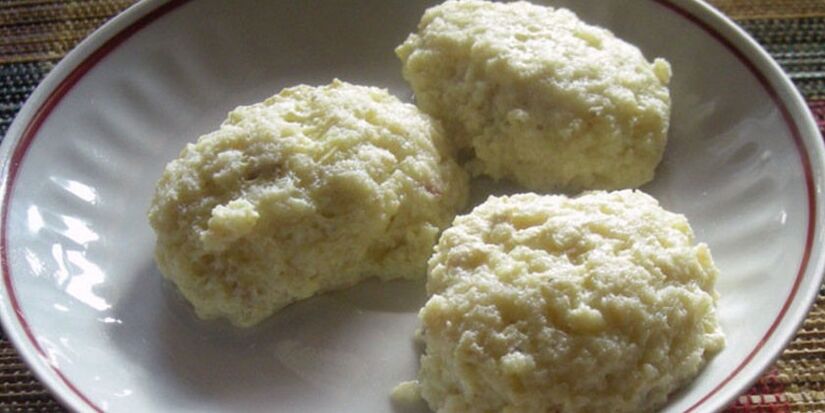
ᲓSecert
Although sweets are prohibited on a hypoallergenic diet, you can still diversify the menu with goodies. You just have to prepare them properly. Most hypoallergenic desserts are based on fruit, kefir or cottage cheese. The main thing is that fermented dairy products are not sour. Ordinary pears, sliced or mashed, will add sweetness to them. Cottage cheese is the best basis for a dish. It can be prepared by adding the allowed fruit. Baked apples are a popular dessert of the latter. It is even combined with cottage cheese - it turns out delicious and healthy.
Cottage cheese casserole
Since eggs belong to the category of products with high quality allergenic activity, it is not recommended to use them in combination with a hypoallergenic diet, especially for children. Casserole can be prepared even without these ingredients. The flour is also easily replaced with semolina, which will give the dish a dense consistency. To add a sweet taste it is allowed to add any hypoallergenic fruit to the cottage cheese. Sugar should be added after completing a strict diet, e. g. ი. After 7-10 days.
Ingredients:
- Pear - 3 pcs. ;
- Low-fat cottage cheese - 400 g;
- Sugar - 1 tbsp;
- Semolina - 4 p. m. K. L. ;
- Kefir or yogurt without any additives - 3 tbsp. K. L.
Method of preparation:
- Take a bowl where you put cottage cheese with yogurt or kefir, mix well.
- Add cereal, sugar. Stir again.
- Wash pears, grate, finely chop.
- Add fruit to the curd mass, stir, transfer to a greased baking tin.
- Send in the oven for half an hour. The optimum temperature is 180 degrees.

Baked apples
It is the most popular dietary and at the same time hypoallergenic dessert. Since allergy sufferers are not advised to eat fresh fruit, they can be baked. It turns out not only delicious, but also good for the stomach. Apples are the perfect fruit for this dessert. They are baked not only in the oven but also in the microwave, so the delicacy is made very quickly and easily. To make the dessert even more useful, you can add fruit with cottage cheese. Do not use only recipes where you need to add honey inside an apple.
Ingredients:
- Apples - 3 pieces;
- Sour cream with a low percentage of fat - 2 tbsp. K. L. ;
- Cottage cheese - 100 g;
- Vanillin - on the tip of a knife.
Method of preparation:
- Wash the apples, cut the kernels, but in such a way that the bottom of the fruit remains intact and a kind of cup is formed.
- Mix cottage cheese with sour cream, add vanilla, bring the mass to a uniform consistency.
- Fill the apples with the cottage cheese mixture.
- Place the fruit on a baking sheet, bake for 25-30 minutes at 200 degrees.
